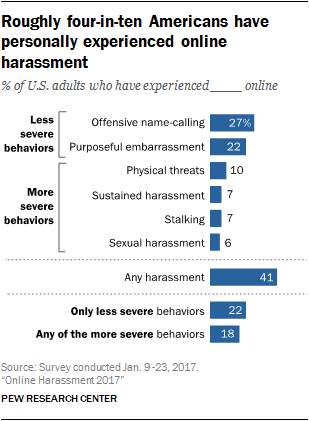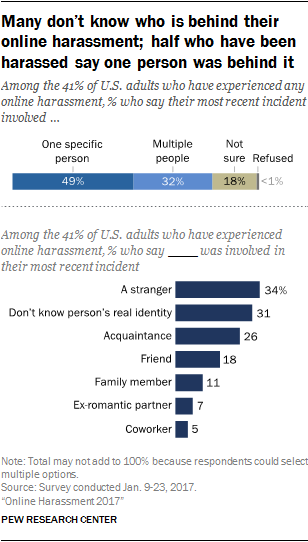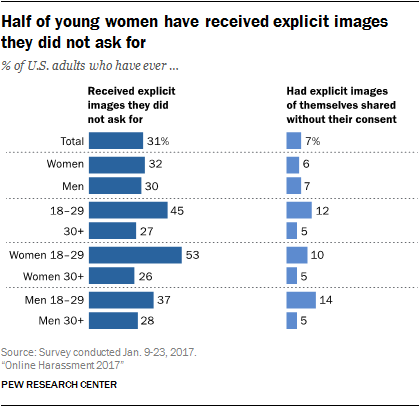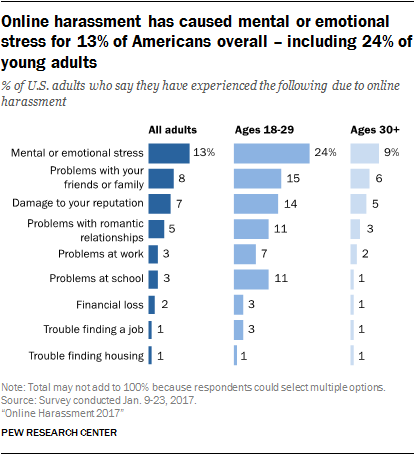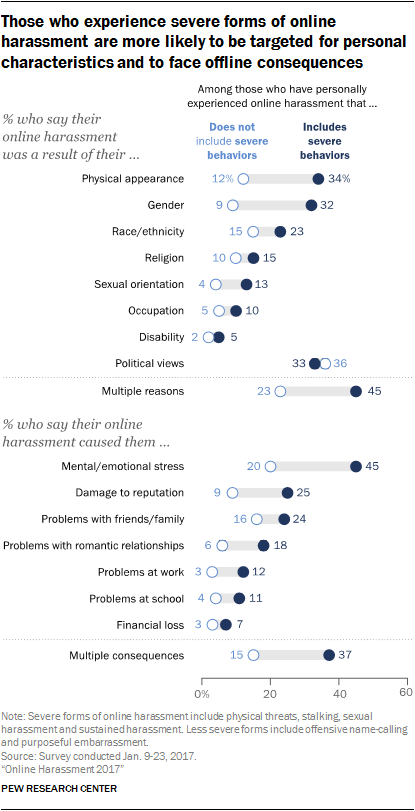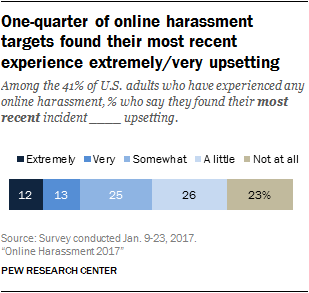-
-
Notifications
You must be signed in to change notification settings - Fork 1
Findings on Online Harassment
This article collects qualitative and quantitative findings about online harassment and misogyny from empirical studies and reports.
https://www.womensmediacenter.com/speech-project/research-statistics
Findings based on a nationally representative survey among US adult internet users (n=4248). See full report here, and all associated files and graphics here.
41% of Americans (up from 35% in 2014) have personally experienced online harassment, 18% have experienced severe forms of online harassment (stalking, physical threats, sexual harassment or harassment over a sustained period of time). This includes 6% who have experienced online sexual harassment.
14% have been harassed online based on their political views, 9% based on race, 8% based on gender, 5% based on religion and 3% based on sexual orientation. Women are more than twice as likely as men to experience gender-based online harassment (11% vs. 5%). Men are around twice as likely than women to experience harassment based on political views (19% vs. 10%). Black (25%) and Hispanic (10%) internet users are much more likely than whites (3%) to experience harassment based on race or ethnicity.
Even more have witnessed online harassment:
Social media is the most common arena for online harassment:
The perpetrator is often unknown, but friends, family, ex-partners and coworkers play an important role too:
Younger people (18-29) are more likely to experience severe forms of online harassment:
53% of younger women (18-29) have received unsolicited explicit images, 12% of younger women have had explicit images of themselves shared without consent. The somewhat surprising finding here is that at 14%, even more young men than young women report non-consensual sharing of explicit images.
How the problem is perceived varies by age, gender, and race:
Mental/emotional stress among effects of online harassment, alongside economic factors, damage to reputation and strained family or romantic relationships:
Perception of severity and reaction to online harassment varies:
Silencing effect of online harassment:
See full report here
47% of internet users (aged 15 and older) have experienced online harassment or abuse, and 72% have witnessed it. The report identifies the following behaviours as online harassment: offensive name calling, purpose-fully embarrassing someone, physical threats, sexual harassment, romantic partner who purposeful psychological or emotional hurts their partner, stalking, harassing over a long period of time.
Men and women are equally likely to face harassment; women face a wider variety of abuse and more serious violations. Young people (under 30) were more likely to have witnessed all types of online harassment than those aged 30+. LGB internet users (trans* persons were not identified, i.e. only sexual orientation but not gender identity was asked of participants) were significantly more likely to experience online harassment, as well as more likely to self-censor online to avoid harassment (details on p. 37-38 of the report).
